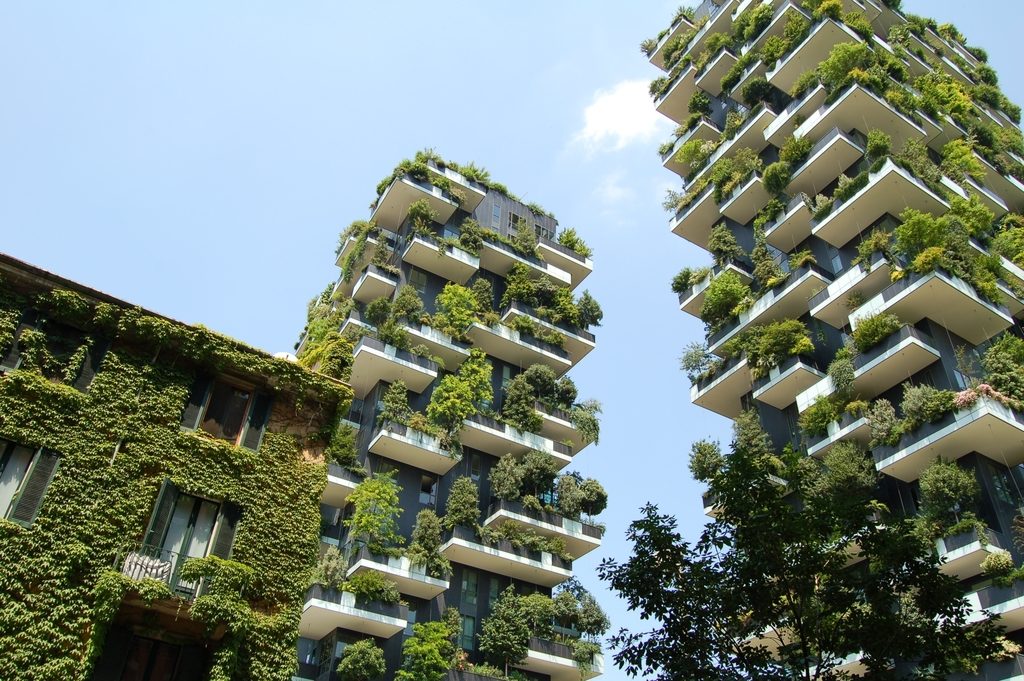
Urban Green Spaces: The Case for Dirty Earth
Posted On Saturday, June 11, 2022 by Abhinav Choudhry under Sustainable Development

Urban Green Spaces: The Case for Dirty Earth
A story
A nice chunk of my childhood in Bhopal was spent playing in neighbourhood parks. These parks were a lifeline for children otherwise limited to terraces and gullies because big grounds were too few and too far. Such parks were uncomplicated: a simple fence or barbed wire served as the boundary; rows of trees lined the edge; an empty expanse of grass and weeds lay at the centre; and a children’s area with swings, slides and merry-go-rounds formed a fun corner. The open field allowed us to play the team-based games that need space, such as football and cricket. However, with increasing consternation, I have noted that that these parks have changed much over the years. It started with the concretisation of the fences and the stricter limitations of park timings. Then, some structures began getting built inside the park periphery to facilitate community activities. This was followed by creation of tiled walkways. After that, the tiles were also applied to the entire children’s area and entry into the park. Still after, more walkways were added in the middle of the original rectangular walkways so as to split it into multiple rectangles. This has resulted in nearly half of the original park surface now being covered with tiles or concrete. Though some pretty shrubs have been added for decoration, no new trees have been planted. Some parks have almost fully been converted to religious buildings.
A democratic choice
Why did I expend so much ink on some neighbourhood parks in a tier two city in a developing country? For starters, this chain of events occurred in parks throughout the city, and these events are likely happening in other Indian cities, and perhaps cities in other developing countries. It is related at the core to the issue of development. The parks in question were not planned by the government but were developed by private societies with their own money. This is as democratic a process as possible. People have chosen and they have decided to cover open fields with tiles, and keep manicured grass in open tiny stretches giving the landscape a picture perfect look. People have also chosen to cover the land adjacent to their houses and roads with concrete instead of keeping the dirty open ground. Inside their plots, they have opted to cover as much ground as possible, sometimes entirely, and then paid the fines for ratification of illegal construction. A polished concrete structure looks better in their eyes and is easier to clean and maintain. The façade of greenery is maintained by tiny potted plants. It is hard to argue for dirty earth once again.
Urban heat island effect: A hot issue
Why though do I sound so miffed with a chain of events that has occurred with the free will of residents at their own cost? Well, part of the reason is that the changes are unfair to the children. Children get hurt far more easily on paved surfaces and tiles than direct earth. The park gets hotter meaning that they play lesser. They also no longer play the team-based games in these parks as the game becomes more about manoeuvring around all the obstacles without breaking a leg than playing. My bigger peeve though is that these changes do not entirely happen at their own cost but at my cost as well. A green and open spaces constitute an integral part of a city’s ecosystem, and all the city residents bear the cost of the urban heat island effect (UHI). Quoting from the Delhi Urban Art Commission’s 2020 extensive guidelines on park design, “The urban heat island effect is the increase in ambient temperature due to heat absorption and storage by urban areas. Pavement is a primary cause of this phenomenon. The best way to decrease this is by decreasing its area, to shade areas with trees, or place it in areas shaded by buildings or park structures.” [1]. The apparent beautification of parks and open urban spaces acts to increase the heat island effect by increasing the paved area. This is a double whammy as the green spaces are intended to mitigate the effect, not to contribute to it.
The 21st Century has seen much focus on global warming and associated climate change, with not everyone even willing to accept climate change. In contrast, the phenomenon of urban heat island effect is uncontested by all. Depending on the specific area in question, urban areas have been found to be hotter by 3-7°C than surrounding areas [2], and this difference would persist irrespective of the quantum of global temperature increase. In a world that is urbanising rapidly and has a consistent trend of rural-urban migration, concrete often stands for development while open ground signifies the potential for development needed to be realised with money. Planned cities can mitigate this to an extent and there are excellent blueprints for green development. However, many of the small towns and cities undergoing urbanisation are following the process in a more laissez faire manner even if blueprints exist. Change would be decided not just by top-down design of urban architects but by those who own and live on the land. Therefore, the belief that paved area is beautiful is dangerous as people may not realise that it may make a city even 7°C hotter than the surrounding landscape, a landscape that itself is heating every year. In nominal terms, we are talking of rural people shifting to an urban existence almost 10°C hotter by the end of the century, considering 1-4°C global temperature change and the remaining due to UHI, a change that is much more drastic than what the nominal change in global temperature suggests. This change is also likely to manifest itself in health issues as no one knows what the population effects on the human body of such a drastic change in temperature would be, in countries that are already hot.
A race against time
The costs of UHI are borne by the general population in the form of increased water and energy use. The change can be seen in how swiftly people in the developing world have embraced air conditioners and how in a few short years, cars are overwhelmingly being driven with windows shut and ACs on. This is a trajectory that the Global North could afford with its smaller populations but is absolutely unsustainable for the Global South. Unlike ceiling fans and desert coolers, air conditioners act by removing the heat from the user’s system and dumping it on the heat sink, basically the immediate surroundings. The laws of thermodynamics also limit the efficiency of this process and there is extra heat generated in the process. A person standing next to the exhaust of AC would understand what I am describing. The heating of cities and the increase in night-time temperatures due to air-conditioning is a well-known phenomenon and a topic of concern [3]. Hotter countries in Asia or Africa, can scarcely afford the temperature increase if more of the population keep on turning to ACs, even if they somehow are able to afford the energy. They are, in any event, projected to suffer disproportionately from the adverse effects of climate change [4]. Therefore, it is prudent for public policy to inform people about the consequences of their choices and learn more about design guidelines. At least, it would make some of the people opting for ‘clean’ concrete and air conditioning think twice. Democracy is all about making informed choices.
[1] Delhi Urban Art Commission, “PARK DESIGN GUIDELINES Delhi,” Delhi, 2020.
[2] TERI, “Urban Planning Characteristics to Mitigate Climate Change in context of
[3] F. Salamanca, M. Georgescu, A. Mahalov, M. Moustaoui, and M. Wang, “Anthropogenic heating of the urban environment due to air conditioning,” J. Geophys. Res. Atmos., vol. 119, no. 10, pp. 5949–5965, May 2014, doi: 10.1002/2013JD021225.
[4] USGLC, “Climate Change and the Developing World: A Disproportionate Impact,” 2021. [Online]. Available: https://www.usglc.org/blog/climate-change-and-the-developing-world-a-disproportionate-impact/. [Accessed: 09-Jun-2022].

Abhinav Choudhry
Abhinav is a Research Associate at Tata-Cornell Institute for Agriculture and Nutrition, involved in research on agriculture, nutrition and public health. He is extremely interdisciplinary and has varied interests and so he has a Bachelors in Computer Science Engineering from RGPV, Bhopal, a Master's degree in Finance and Control from The Department of Financial Studies, University of Delhi, and a second Masters in Public Administration (Environmental Science and Policy) from Cornell University. He has worked in the domains of banking, sustainable agriculture, environmental finance, and renewables. He is also soon to join a PhD program in Information Sciences at the University of Illinois, Urbana-Champaign. Abhinav's other interests include history, financial market investments, health science, and food.
Recent Articles
- India's March for Sustainable Future
- Water Insecurity in India
- A New Paradigm in the Financing of Solar Energy Projects
- Land Management: A step towards mitigating Land Degradation
- Impact of COVID-19 on Water Issues and the Way Forward
- Humanity better off with world order without ‘Chinese characteristics’
- Models to Make Vocational Training Work in India
- Will Seed Bill 2019 deliver the goods?
- Stubble Burning Farmers: Architects of Delhi’s Breathing Woes, or Hapless Scapegoats?
- Does India Need More Policy Action for Its Senior Citizens?
- Creating a future-proof curriculum for the digital age
- Policymakers, wake up! Floods in Chennai are not Alarm bells, they are explosions
- 'Environmental Finance — Private Capital and Private Profits for Public Gain— Pretty Promising, though not without Pain'
- Inclusive Innovations in Education Praxis
- Antibiotic Resistance: Fighting a Multi-Headed Demon
